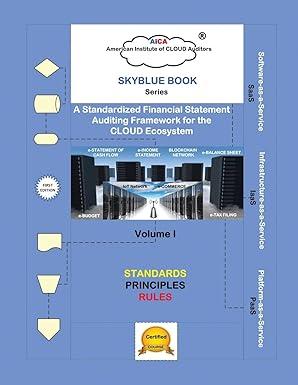101 Chapter 2 Analyzing Transactions The debit and credit totals are not equal as a result of the following errors: a The cash entered on the trial balance was understated by $6,000. b. A cash receipt of $5,600 was posted as a debit to Cash of $6,500. c. A debit of $11,000 to Accounts Receivable was not posted d. A retum of$150 of defective supplies was erroneously posted as a $1,500 credit to Supplies. e. An insurance policy acquired at a cost of $1,200 was posted as a credit to Prepaid Insurance. f. The balance of Notes Payable was understated by $20,000. gA credit of $4,800 in Accounts Payable was overlooked when determining the balance of the account. h A debit of $7,000 for a withdrawal by the owner was posted as a credit to Terry Colby, Capital. i. The balance of $58,100 in Rent Expense was entered as $51,800 in the trial balance. Gas, Electricity, and Water Expense, with a balance of $24,150, was omitted from the trial balance. Instructions 1. Prepare a corrected unadjusted trial balance as of August 31, 2019 Does the fact that the unadjusted trial balance in (1) is balanced mean that 2 there are no errors in the accounts? Explain. Problems: Series B OBJ. 1, 2, 3,4 Entries into T accounts and trial balance PR 2-18 Ken Jones, an architect, opened an office on April 1, 2019. During the month, he com- pleted the following transactions connected with his professional practice a. Transferred cash from a personal bank account to an account to be used for the busi- ness, $18,000. b. Purchased used automobile for $19,500, paying $2,500 cash and giving a note payable for the remainder. 3. Total of Debit umn: $69,550 c. Paid April rent for office and workroom, $3,150. d. Paid cash for supplies, $1,450. e. Purchased office and computer equipment on account, $6,500. f. Paid cash for annual insurance policies on automobile and equipment, $2,400. g. Received cash from a client for plans delivered, $12,000. h. Paid cash to creditors on account, $1,800. i. Paid cash for miscellaneous expenses, $375. j. Received invoice for blueprint service, due in May, $2,500. k. Recorded fees earned on plans delivered, payment to be received in May, $15,650. L Paid salary of assistant, $2,800. m. Paid cash for miscellaneous expenses, $200. n. Paid $300 on note payable. o. Paid gas, oil, and repairs on automobile for April, $550. Instructions 1. Record these transactions directly in the following T accounts without journalizing: Cash Accounts Receivable; Supplies; Prepaid Insurance; Automobiles; Equipment; Accounts Pay- able; Notes Payable; Ken Jones, Capital; Professional Fees; Rent Expense; Salary Expense; Blueprint Expense; Automobile Expense; Miscellaneous Expense. To the left of each amount entered in the accounts, place the appropriate letter to identify the transaction. 2. Determine account balances of the T accounts. Accounts containing a single entry only (such as Prepaid Insurance) do not need a balance. (Continued) 101 Chapter 2 Analyzing Transactions The debit and credit totals are not equal as a result of the following errors: a The cash entered on the trial balance was understated by $6,000. b. A cash receipt of $5,600 was posted as a debit to Cash of $6,500. c. A debit of $11,000 to Accounts Receivable was not posted d. A retum of$150 of defective supplies was erroneously posted as a $1,500 credit to Supplies. e. An insurance policy acquired at a cost of $1,200 was posted as a credit to Prepaid Insurance. f. The balance of Notes Payable was understated by $20,000. gA credit of $4,800 in Accounts Payable was overlooked when determining the balance of the account. h A debit of $7,000 for a withdrawal by the owner was posted as a credit to Terry Colby, Capital. i. The balance of $58,100 in Rent Expense was entered as $51,800 in the trial balance. Gas, Electricity, and Water Expense, with a balance of $24,150, was omitted from the trial balance. Instructions 1. Prepare a corrected unadjusted trial balance as of August 31, 2019 Does the fact that the unadjusted trial balance in (1) is balanced mean that 2 there are no errors in the accounts? Explain. Problems: Series B OBJ. 1, 2, 3,4 Entries into T accounts and trial balance PR 2-18 Ken Jones, an architect, opened an office on April 1, 2019. During the month, he com- pleted the following transactions connected with his professional practice a. Transferred cash from a personal bank account to an account to be used for the busi- ness, $18,000. b. Purchased used automobile for $19,500, paying $2,500 cash and giving a note payable for the remainder. 3. Total of Debit umn: $69,550 c. Paid April rent for office and workroom, $3,150. d. Paid cash for supplies, $1,450. e. Purchased office and computer equipment on account, $6,500. f. Paid cash for annual insurance policies on automobile and equipment, $2,400. g. Received cash from a client for plans delivered, $12,000. h. Paid cash to creditors on account, $1,800. i. Paid cash for miscellaneous expenses, $375. j. Received invoice for blueprint service, due in May, $2,500. k. Recorded fees earned on plans delivered, payment to be received in May, $15,650. L Paid salary of assistant, $2,800. m. Paid cash for miscellaneous expenses, $200. n. Paid $300 on note payable. o. Paid gas, oil, and repairs on automobile for April, $550. Instructions 1. Record these transactions directly in the following T accounts without journalizing: Cash Accounts Receivable; Supplies; Prepaid Insurance; Automobiles; Equipment; Accounts Pay- able; Notes Payable; Ken Jones, Capital; Professional Fees; Rent Expense; Salary Expense; Blueprint Expense; Automobile Expense; Miscellaneous Expense. To the left of each amount entered in the accounts, place the appropriate letter to identify the transaction. 2. Determine account balances of the T accounts. Accounts containing a single entry only (such as Prepaid Insurance) do not need a balance. (Continued)







